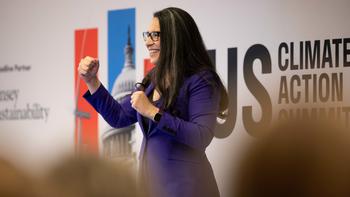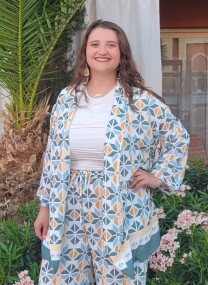A world-first study is challenging long-held assumptions about the role of sunlight in coral biodiversity.
The research questions a classic theory that predicts coral biodiversity is highest in the shallowest waters where more energy is available in the form of sunlight.
The research, led by Dr Ed Roberts from the ARC Centre of Excellence for Coral Reef Studies at James Cook University (Coral CoE at JCU) with colleagues from the Queensland Museum, the UK and Denmark, reveals light—either on its own or in combination with other local factors—doesn’t account for differences in the number of coral species occurring at different depths.
The findings test a long-held theory that there is greater species diversity where there is greater available energy.
“Our understanding of how coral diversity varies across depth has been limited by a lack of high-quality data due to the difficulty of deeper surveys,” Dr Roberts said.
“We were able to overcome that in our survey in Kimbe Bay, Papua New Guinea. This allowed us to test the classic Species Energy hypothesis that proposes the greater the energy available, the greater the diversity.”
“Theoretically, more energy allows more individuals to co-exist. This in turn allows more species to maintain large enough populations to avoid local extinction.”
For corals, the highest diversity was expected in the shallows because corals depend on energy from sunlight. To test this idea, the researchers surveyed corals along 98 per cent of the light gradient. Together, they generated an unprecedented dataset of 8,460 coral colonies across six reefs in Kimbe Bay.
“Our results do not agree with this classic explanation of how diversity changes with energy,” Dr Roberts said.
“Instead, the shallowest depths had fewer species, a pattern also poorly explained by alternative explanations such as competition between corals or environmental disturbance.
The research also revealed that coral diversity was highest at depths between 15 and 20 metres.
The results provide cause to find new theories about diversity distribution.
Co-author Dr Tom Bridge, also from Coral CoE at JCU and the Queensland Museum, said: “Hyper-diverse corals reefs are ideal ecosystems to test theories about how diversity is distributed in nature, so it is really interesting that our results do not support the classic hypotheses.”
“More broadly, our analyses cast doubt on the suitability of these hypotheses more generally across terrestrial, marine and freshwater systems, suggesting that ecologists might need to rethink the underlying causes of these fundamental patterns of diversity.”
Paper: Roberts E, Keith S, Rahbek C, Bridge T, Caley M, Baird A (2019). Biology Letters. ‘Testing biodiversity theory using species richness of reef-building corals across a depth gradient’. DOI: 10.1098/rsbl.2019.0493
Images are available for media use with this story only, and with credit to Ed Roberts.








